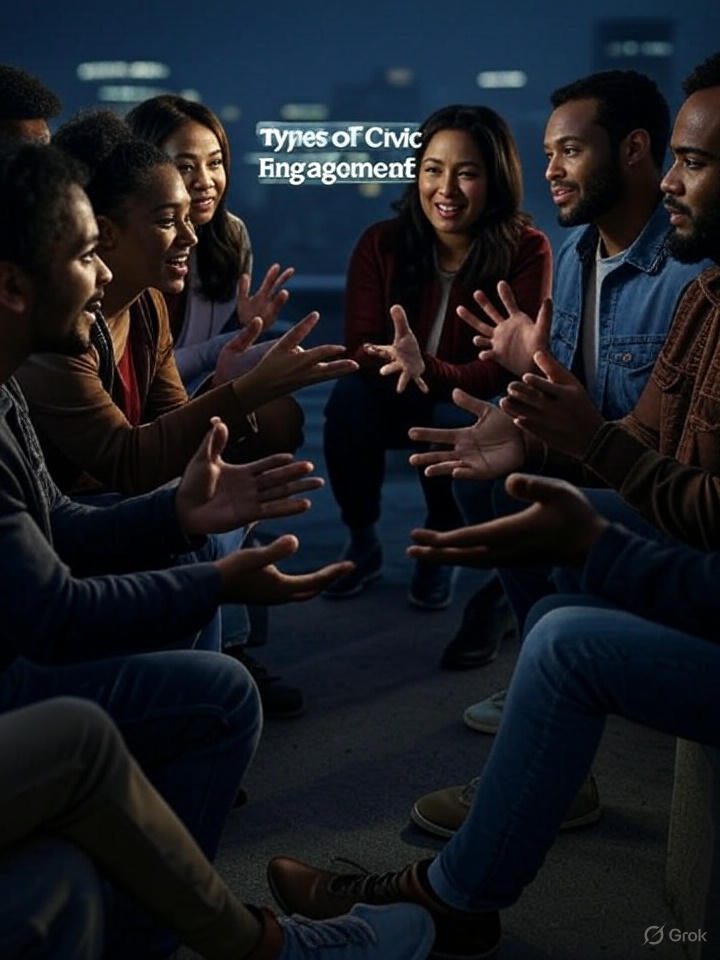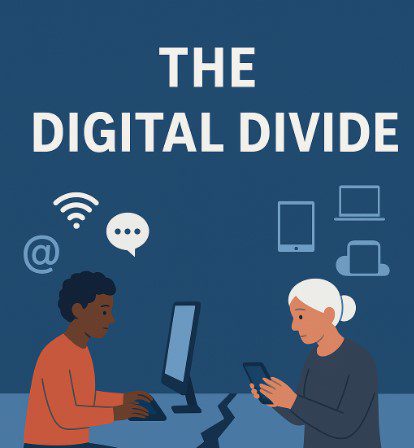Introduction
Have you ever joined a community clean-up or voted in an election? In Pakistan, over 70% of young people participated in some form of civic activity in 2024, according to a local survey. Civic engagement is how people actively shape their society, and it comes in many forms. This article explores the types of civic engagement, from voting to volunteering, and why they matter. Whether you’re a student learning about society, a researcher analyzing trends, or a curious reader, understanding these types helps you see your potential impact. We’ll dive into examples, data, and global insights to show how civic engagement builds stronger communities.
Exploring the Types of Civic Engagement
What Is Civic Engagement?
Civic engagement means taking part in activities that benefit your community or influence decisions. It’s about being an active citizen, not just a bystander. From attending town halls to posting on social media, these actions connect people to their society. Let’s break down the main types.
1. Electoral Participation
This is the most common type, involving voting, campaigning, or running for office. It’s how citizens choose leaders and shape laws.
- Example: In Pakistan’s 2024 elections, 55% of voters turned out, per the Election Commission, showing growing interest.
- Global Context: The UN reports 66% voter turnout in democratic nations in 2023.
- Impact: Gives voice to the public, though turnout varies by region.
2. Community Volunteering
Volunteering involves donating time or skills to help others, like building schools or aiding disaster relief.
- Example: After Pakistan’s 2022 floods, 50,000 volunteers helped distribute aid, per the NDMA.
- Data: The World Bank (2023) links volunteering to a 15% rise in community trust.
- Benefit: Strengthens social bonds and addresses local needs.
3. Advocacy and Activism
This type focuses on raising awareness or pushing for change, often through protests or petitions.
- Example: Pakistan’s 2023 climate marches, with 20,000 participants, pressured for green policies.
- Global Case: The 2020 Black Lives Matter movement saw 15 million tweets, per Pew Research.
- Effect: Drives policy shifts but can polarize opinions.
Real-World Examples and Impacts
Pakistan’s Youth in Action
Pakistan’s youth, 64% under 30 (Pakistan Bureau of Statistics, 2023), lead various civic engagement types. The Pakistan Youth Alliance organized clean-ups in Lahore, engaging 10,000 people in 2024. Electoral participation also rose, with youth voter registration up 20% since 2020. This shows how different types work together to empower a generation.
- Lesson: Diverse engagement builds a stronger democracy.
- Challenge: Needs more resources for rural areas.
Global Spotlight: South Africa’s Reconciliation
Post-apartheid South Africa used civic engagement to heal. The Truth and Reconciliation Commission (1996) involved citizens in sharing stories, with over 20,000 testimonies recorded. This blend of volunteering and advocacy rebuilt trust, with voter turnout hitting 66% by 1999 (UN data).
- Insight: Engagement can repair societal wounds.
- Relevance: Offers a model for conflict resolution.
Digital Engagement: A Modern Shift
Globally, digital tools have added a new type—online civic engagement. In Estonia, e-voting boosted turnout by 20% since 2005 (e-Governance Academy, 2023). In Pakistan, the #TharDeservesBetter campaign on Twitter in 2023 raised drought awareness, leading to government aid.
- Trend: Technology makes participation easier.
- Risk: Misinformation affects 30% of users (WHO, 2023).
Factors Influencing Types of Civic Engagement
Education and Awareness
Knowledge fuels participation. In Pakistan, 38% adult illiteracy (UNESCO, 2023) limits engagement, especially in rural areas. Educated citizens are 40% more likely to vote (UNDP, 2022), showing education’s role across types.
- Solution: Mobile literacy programs.
- Example: Punjab’s 2024 education drives increased voter awareness.
Socioeconomic Status
Wealth and time affect involvement. The World Bank (2023) notes that lower-income groups in Pakistan engage less due to work demands. Yet, volunteering spikes during crises, as seen in flood relief efforts.
- Barrier: Poverty limits access.
- Opportunity: Community support bridges gaps.
Cultural and Political Climate
Culture shapes engagement types. In Pakistan’s tribal regions, traditional roles limit women’s participation, though Aurat March 2023 drew 10,000 attendees. Politically, distrust in government, with 60% of youth citing corruption in 2024 surveys, reduces electoral activity.
- Progress: Advocacy breaks barriers.
- Need: Inclusive policies.
The Future of Civic Engagement Types
Emerging Opportunities
Technology is expanding options. Pakistan’s “Citizen Portal” app, with 1.2 million users by 2025, enables online complaints, a new engagement type. Globally, AI tools help analyze public sentiment, per a 2024 UN study, enhancing advocacy.
- Potential: Wider reach for all types.
- Trend: Digital inclusion grows.
Challenges to Address
Balancing online and offline engagement is critical. Misinformation, impacting 30% of social media users (WHO, 2023), threatens digital types. In Pakistan, fake news during elections has led to calls for literacy campaigns.
- Issue: Polarization risks.
- Strategy: Education and regulation.
A Vision for Tomorrow
As citizenship evolves, all types of civic engagement must adapt. Youth leadership in Pakistan and global digital shifts suggest a future where everyone can participate, regardless of background.
Conclusion
The types of civic engagement—electoral participation, volunteering, advocacy, and digital action—shape vibrant societies. From Pakistan’s youth clean-ups to South Africa’s reconciliation and global tech trends, these efforts empower individuals and communities. Education, culture, and technology influence their success, with challenges like misinformation to overcome. Together, they build a stronger future. How will you choose to engage in your community? Share your story on the Societyopedia Forum!

